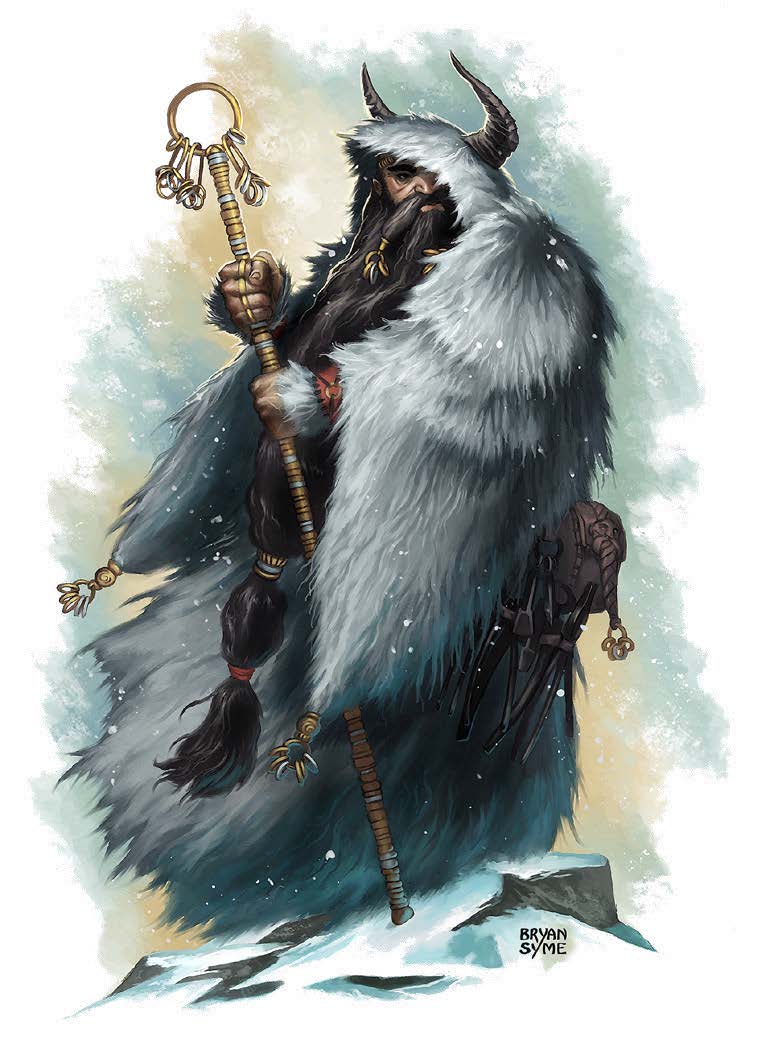
“In the beginning… there was the GM. And they sat behind a screen. On the other side of this screen sat a group of people called players…“
Many early roleplaying games were like an amusement park attraction: the GM built the roller coaster, and the players went along for the ride. Modern RPGs, however, are more like a group assembling a jigsaw puzzle. The GM may assemble the outside pieces, but the entire puzzle isn’t complete without contributions from all the players. The GM may frame the world, but many details are left to the players to help build.
Making Space for Storytelling
As a GM, you’ve at least partially defined the world that your campaign will take place in. Whether it’s a setting you’ve written yourself or a commercially available campaign setting, the basics will be set, but there will still be many details that offer room for expansion. Even in the most well-defined of settings, there will be towns and cities that need some life and cultural details, regions that could accommodate local legends. This is a wonderful creative process, but it would take an enormous amount of effort for one person to write all these details. Fortunately, you are only one participant in your game world, and the others can easily be enlisted to help.
In any group of players, you will inevitably have some that relish creating character backstory while others just want to begin the game. This is not an issue. Your players with the itch to write extensive backstories will question what they can create or alter in your world, and this is a great opportunity to work with them to develop the details of your world. You may have to disallow certain ideas if they conflict with a major plot point that might happen later, but you should be as flexible as possible, perhaps suggesting different details that still support each player’s story. On the other hand, those players who contribute little or no backstory for their characters shouldn’t be pushed into writing a lot of details for their characters. Instead, begin the campaign and use prompts along the way to encourage creativity.
Just One Thing
It’s a good idea to try to get one detail from each player per session. If a player states that they can trap some animals for dinner in the forest because they have the Survival skill, ask them when in the past their character learned these skills. Did they learn from an uncle who only trusted food he caught himself? Were they lost in the woods for a few days and learned to survive on their own? You’re only asking for a short answer, but it becomes a part of the character—that the player added.
Players new to RPGs won’t realize that details of a character’s place in the game world are up to them, so any simple questions you can ask will not only produce a detail or two about the character’s history but will show the beginning player that they have freedom to affect the story. If the character’s trapping skills were learned from their uncle, perhaps the lure of a later rescue mission will be to rescue that uncle who has been captured by a band of goblins. When a new player sees that details they’ve provided for their characters affect the story, they’ll begin to understand that the game is about creating a story together.
The goal of using prompts to encourage the players to contribute to the narrative is to bring all the players together as cooperative storytellers. As the GM, the storytelling is not on your shoulders alone, but you are building a framework to which the players can contribute. It’s easy to use a GM’s screen to hide notes and dice rolls at the table, but that screen can also symbolize a divide, to some, between players and GM. (I still must hide some of my notes, but I do that as subtly as possible without the “wall” of a screen to divide the game’s participants.) The GM will always have the “burden” of setting the stage for the game’s story, but it’s important to find ways to let new players understand that the game is a storytelling exercise shared across the group.

“Even in the most well-defined of settings, there will be towns and cities that need some life and cultural details, regions that could accommodate local legends. This is a wonderful creative process, but it would take an enormous amount of effort for one person to write all these details. Fortunately, you are only one participant in your game world, and the others can easily be enlisted to help.” This is really important advice for new GMs, and new players. As an example prompt, when the players go into a town for the first time, I like asking each one “what in this town catches your eye” to get them to each define part of it.
> As the GM, the storytelling is not on your shoulders alone, but you are building a framework to which the players can contribute.
THIS. I did not really see this clearly until you pointed this out.
My last horrible campaign was one where the two primary GM’s refused to let me contribute to the main story line.
They told the other players lots of lies about me, and lots of their own personal beliefs as truths about me, to the point of poisoning me in that community. But it boiled down to this — they did not want me to contribute to the main story line and went out of their way to block me from it.
And their “side story” for me was not the campaign I signed up for.